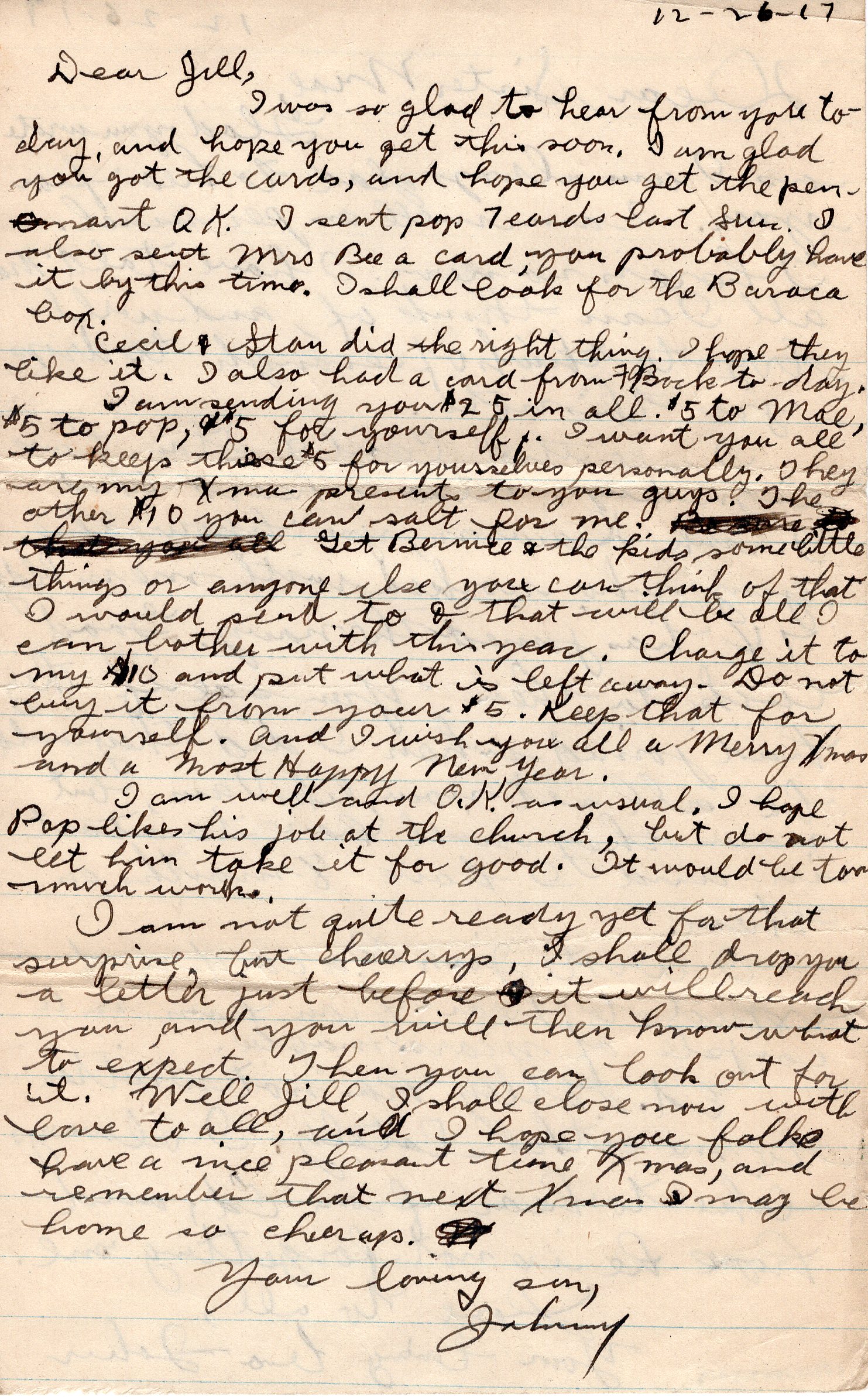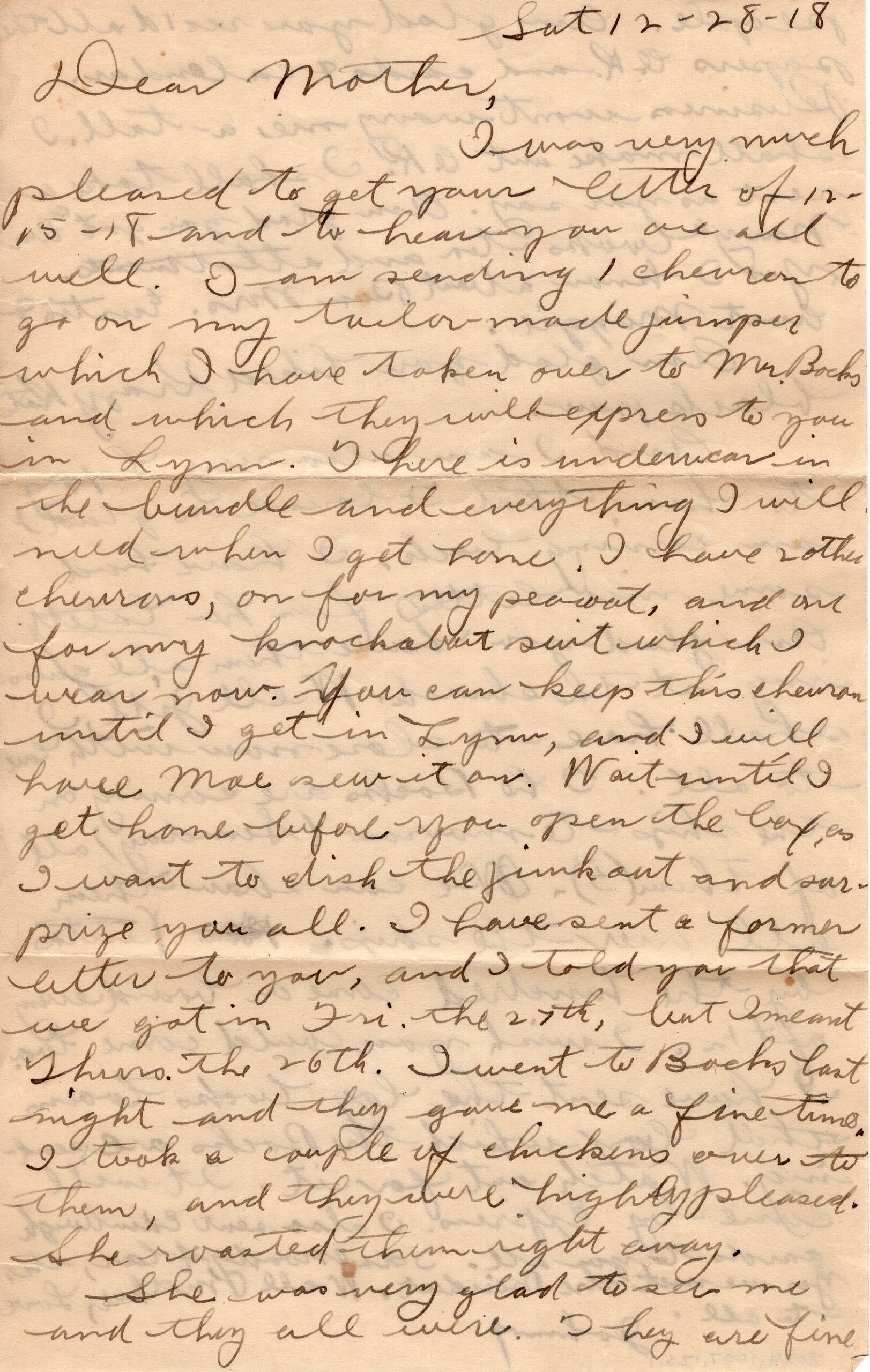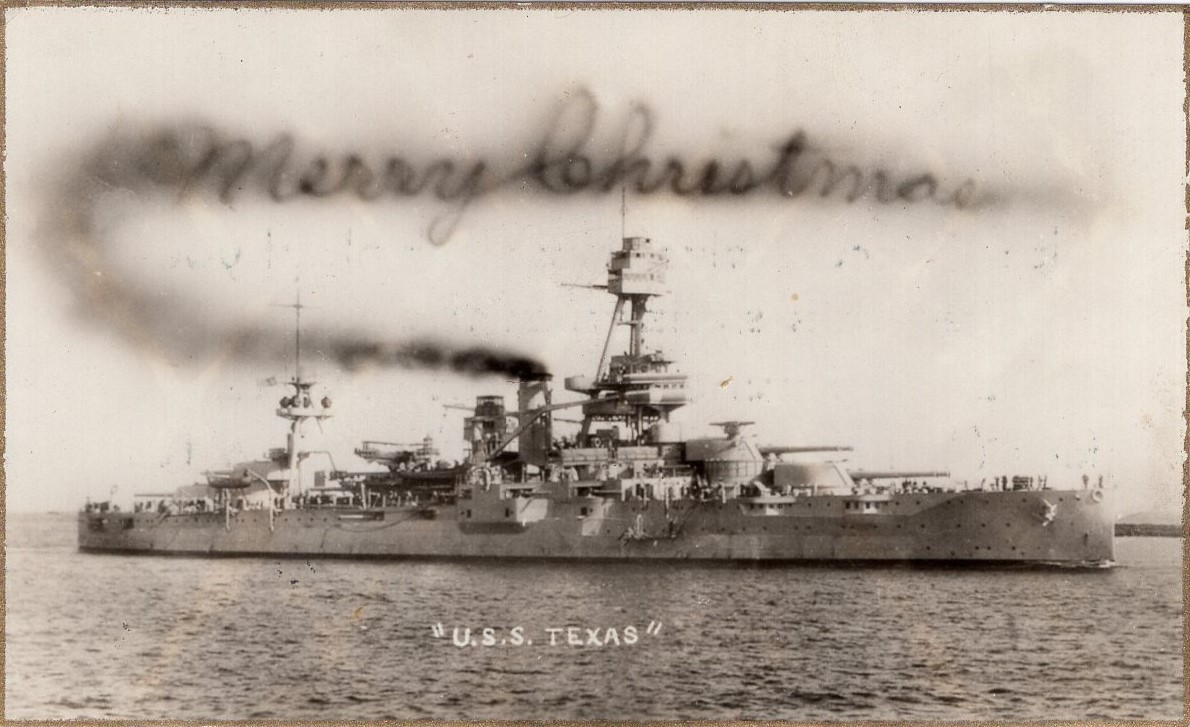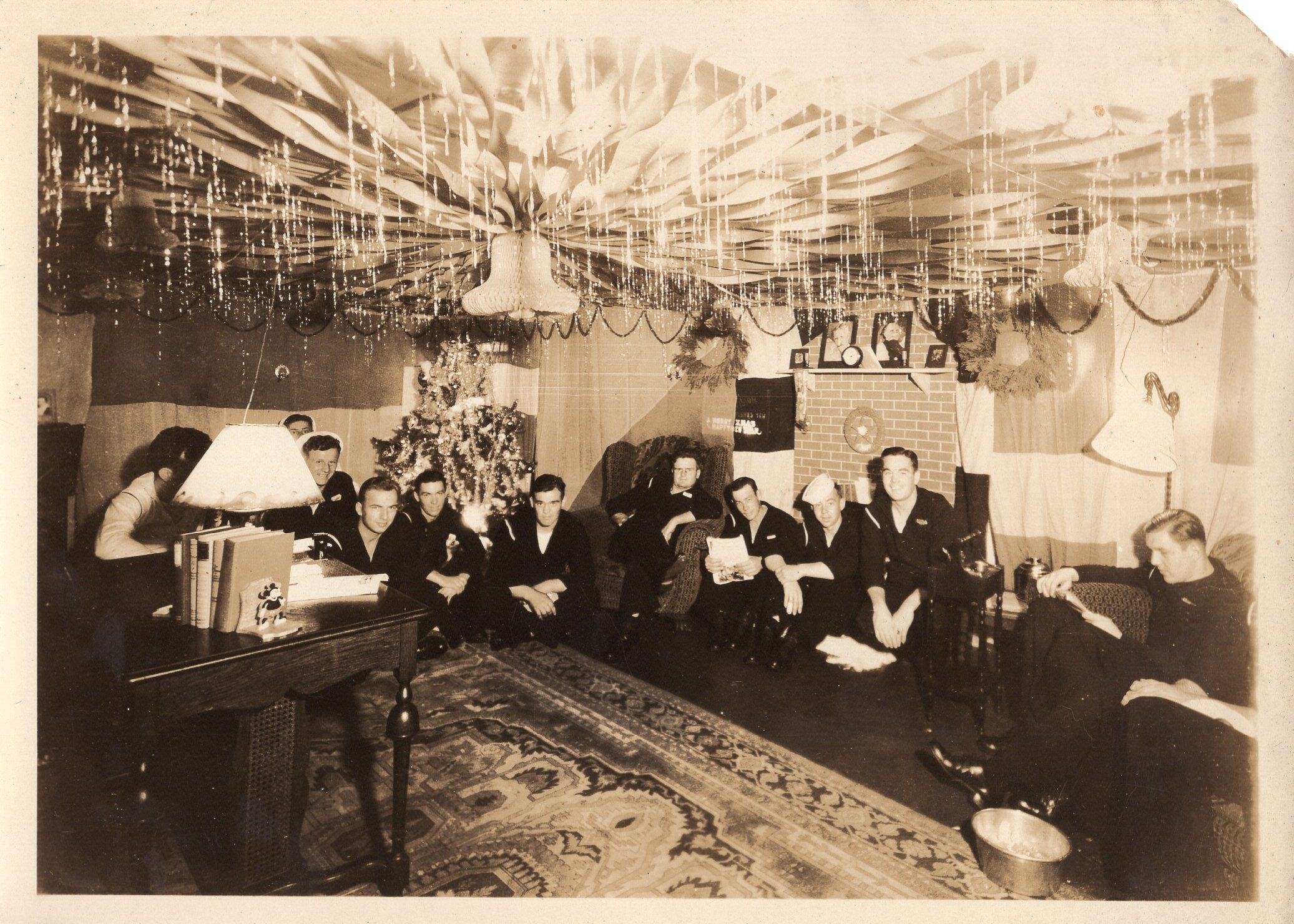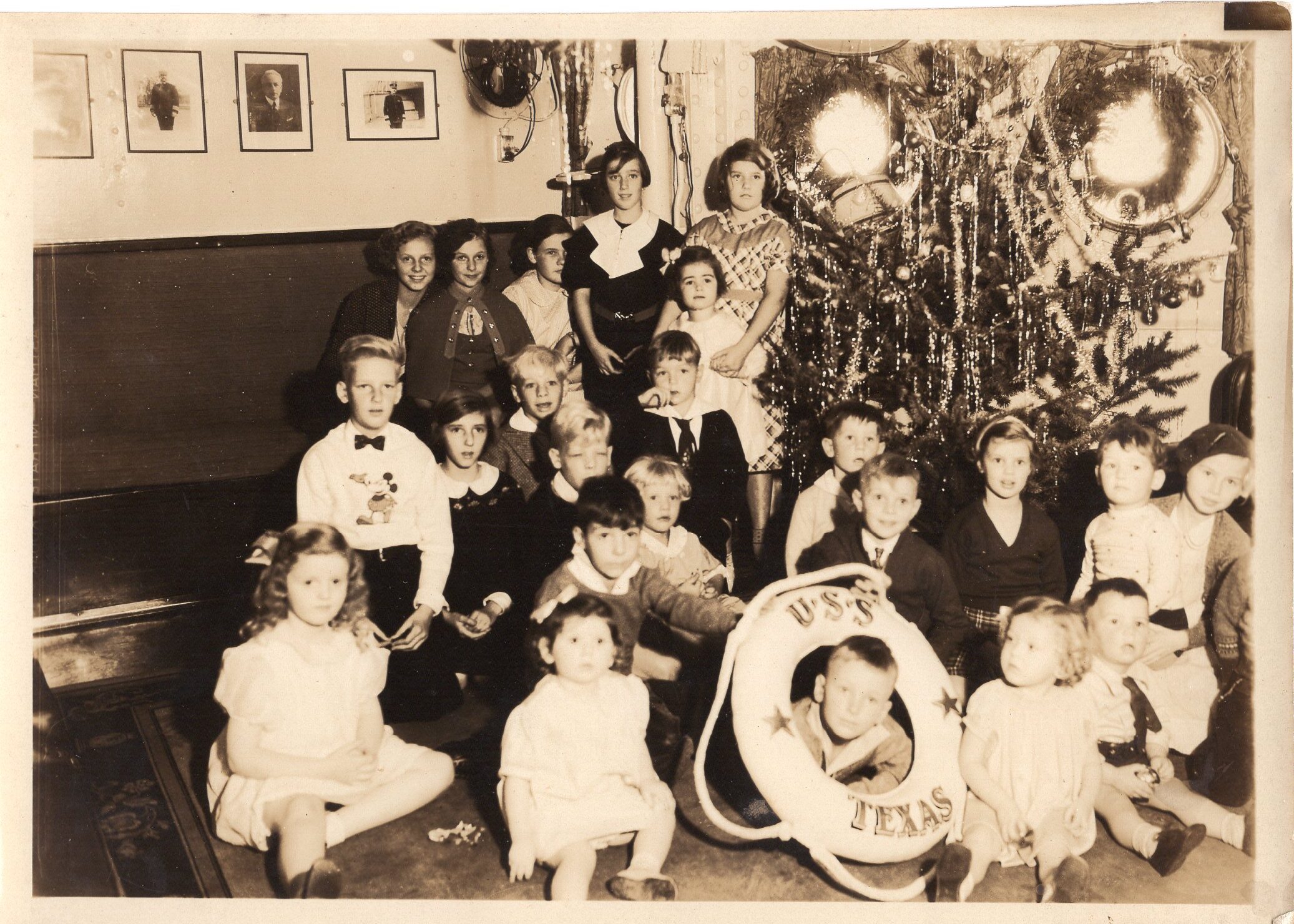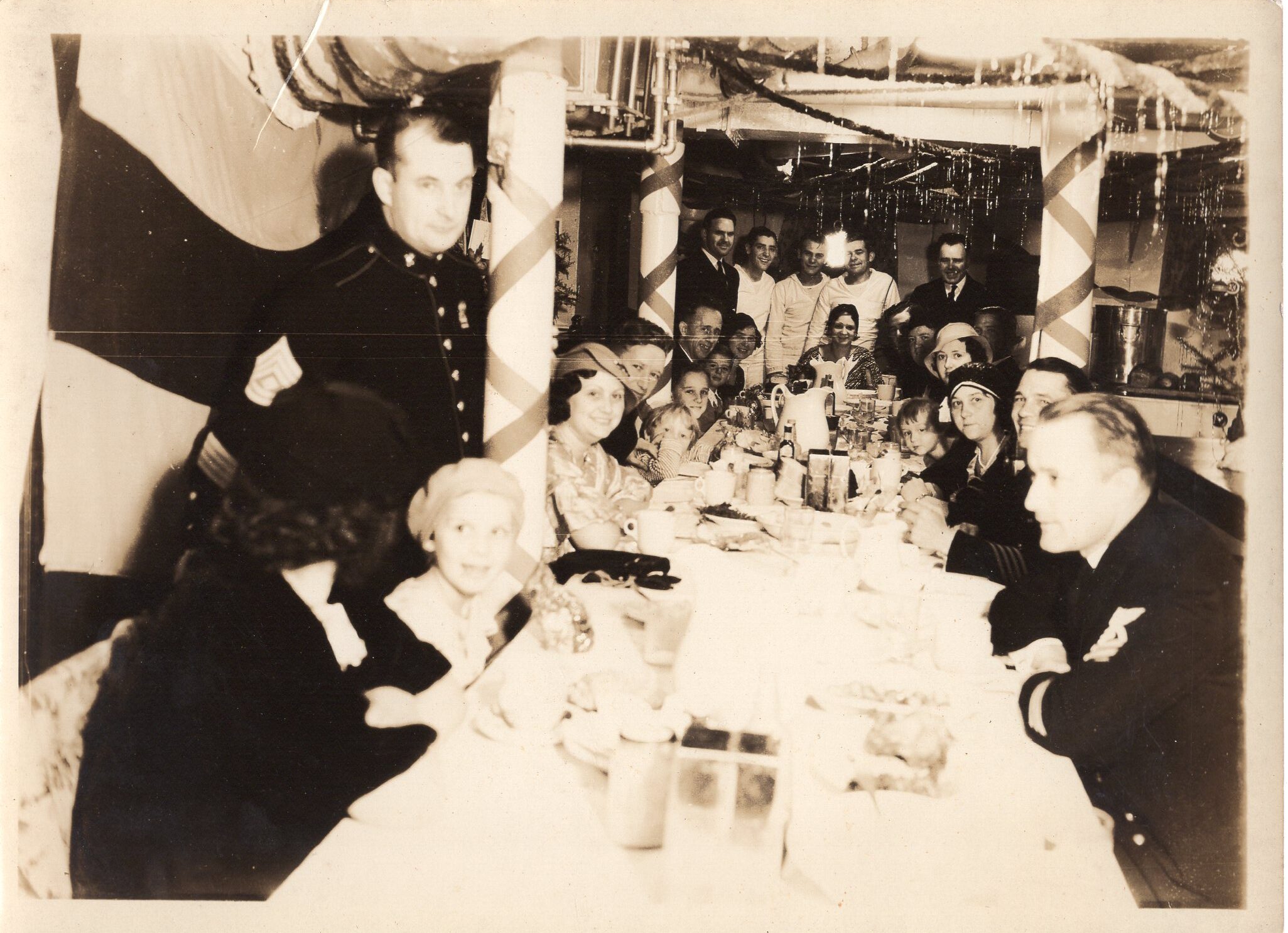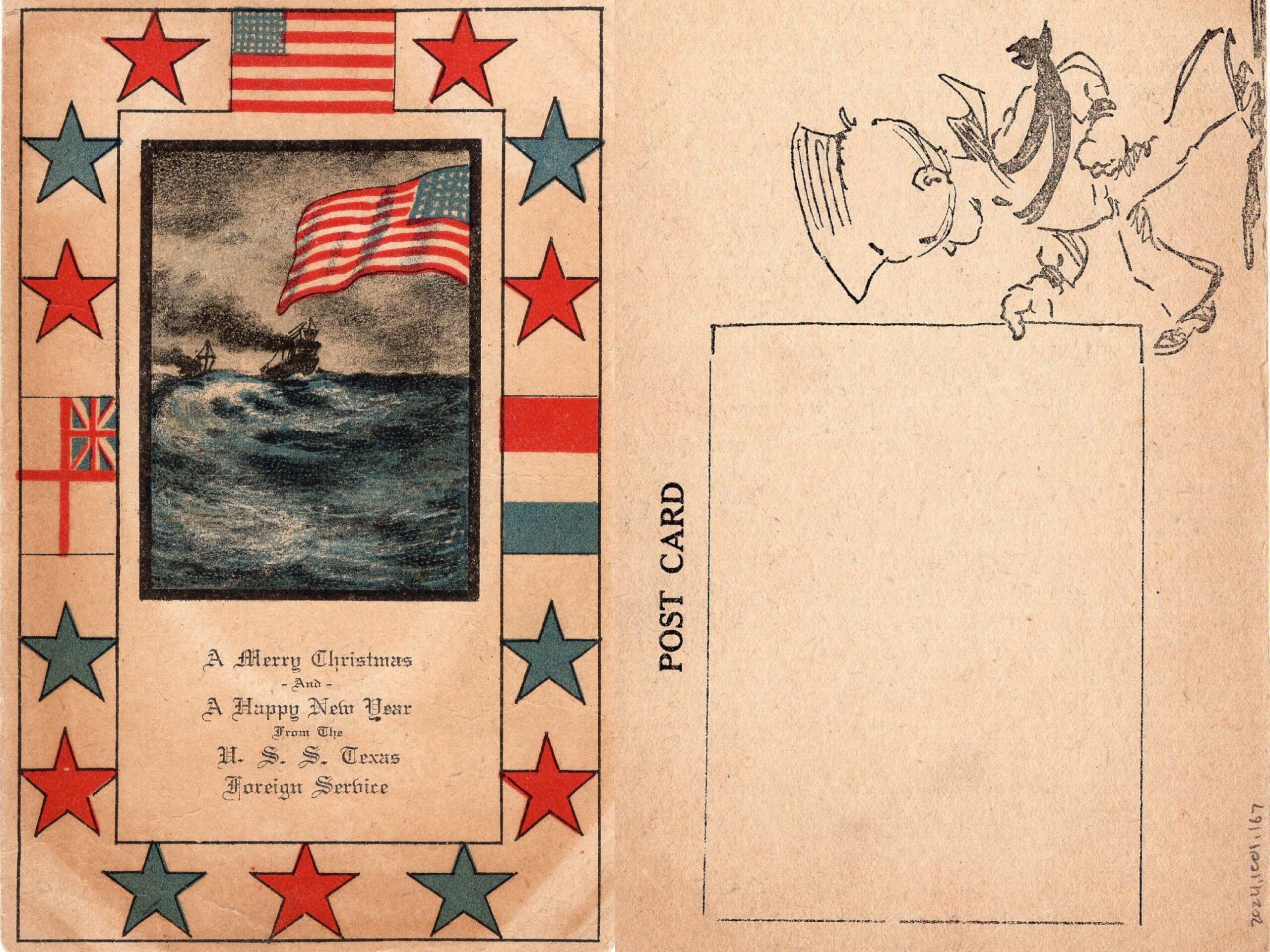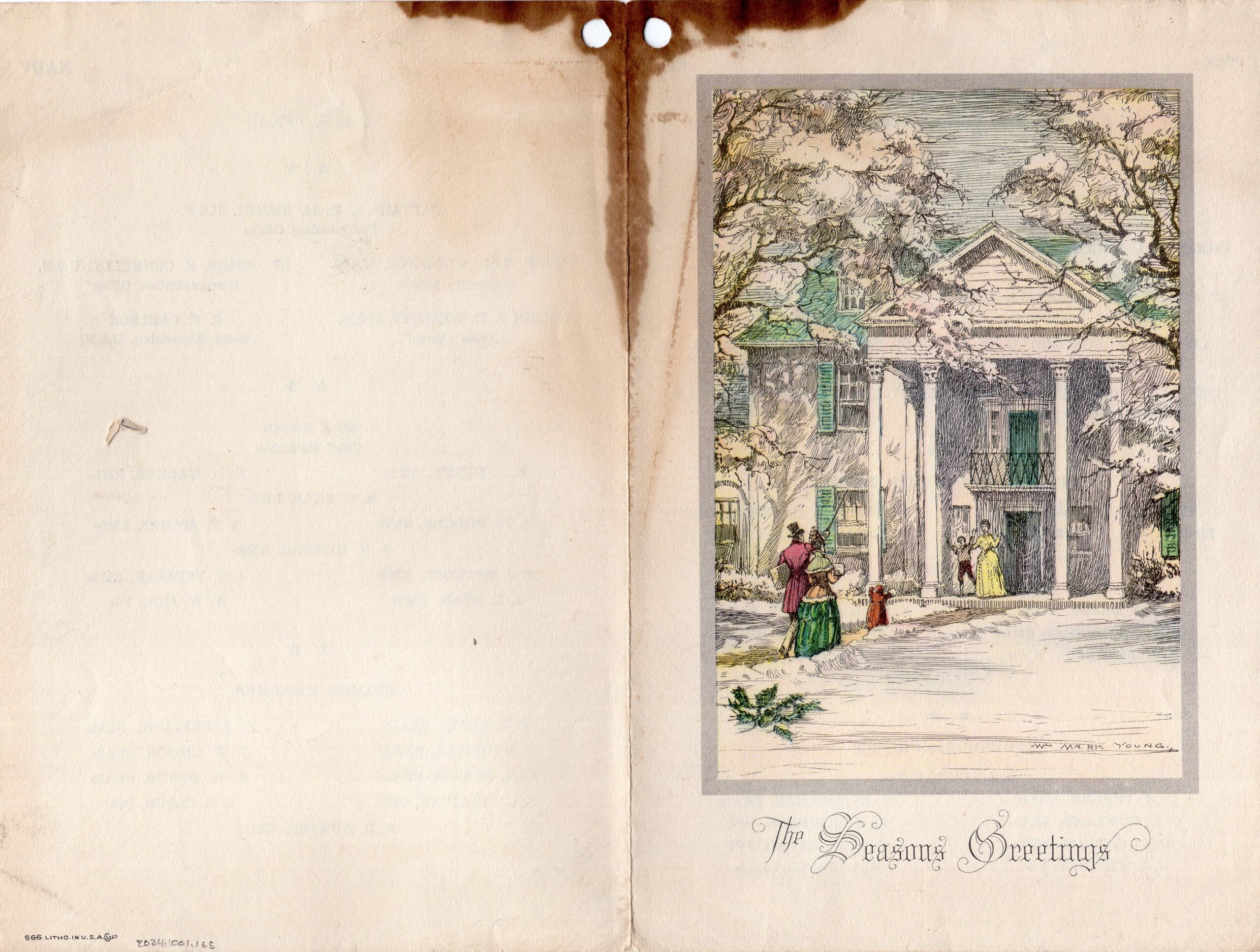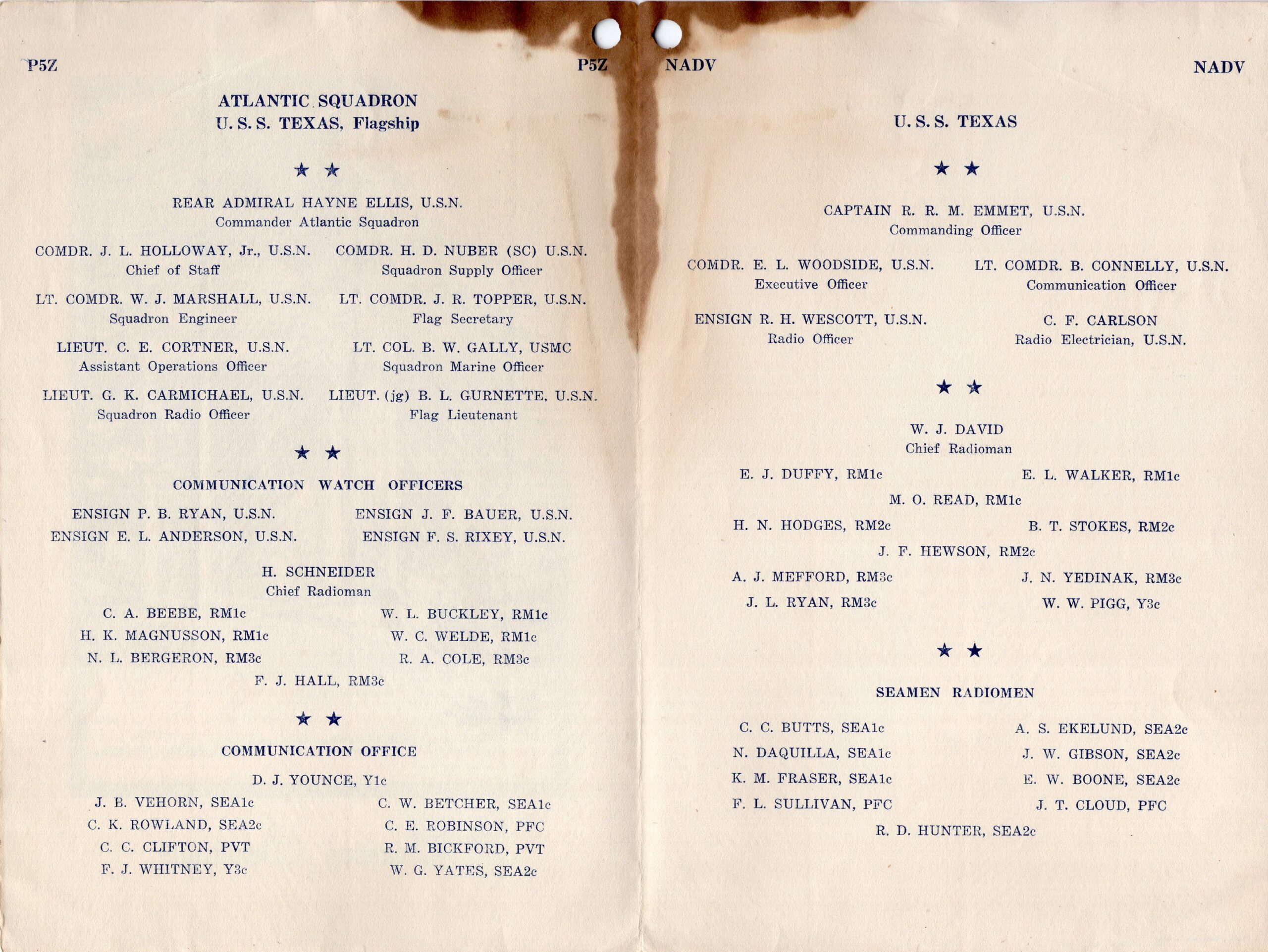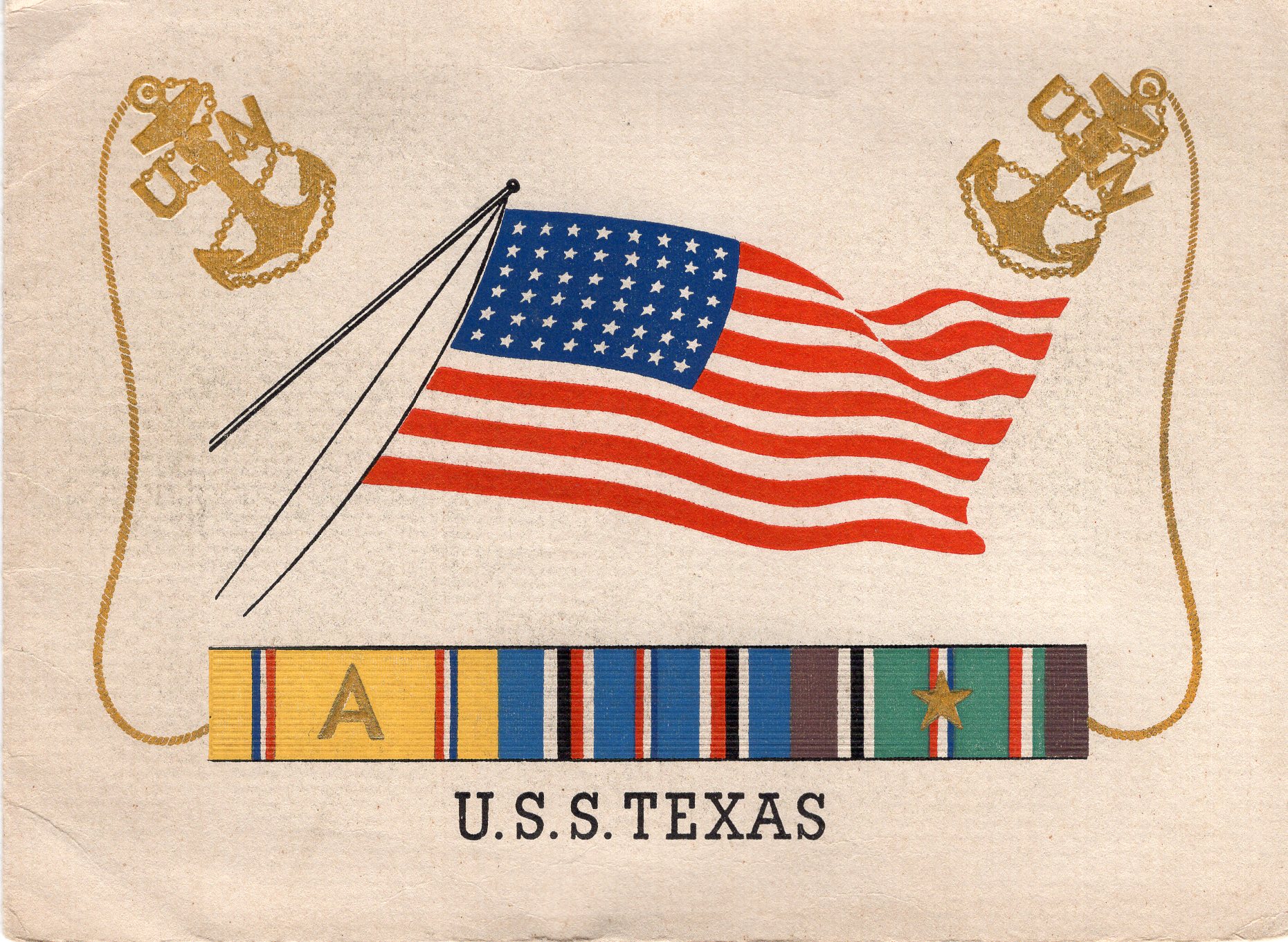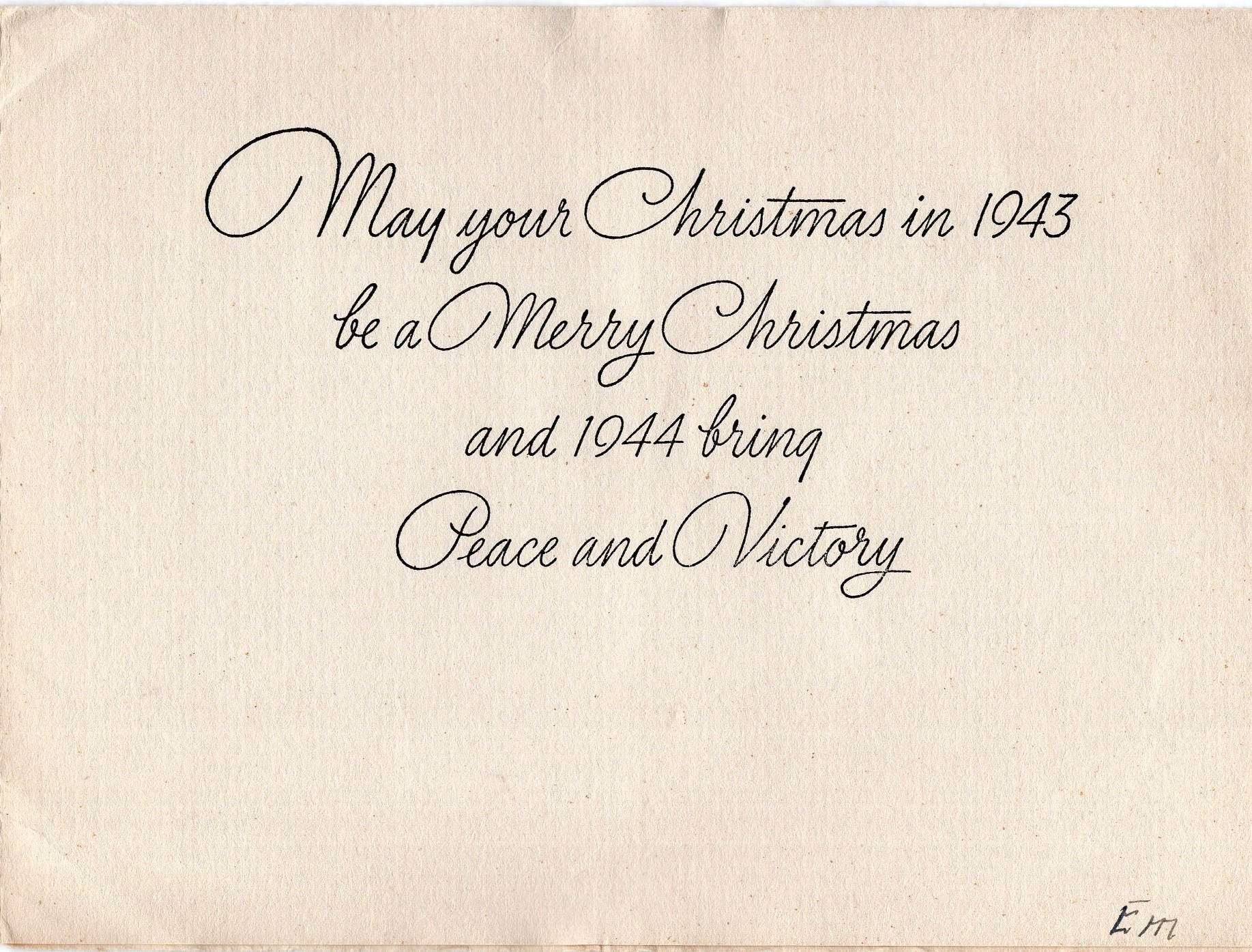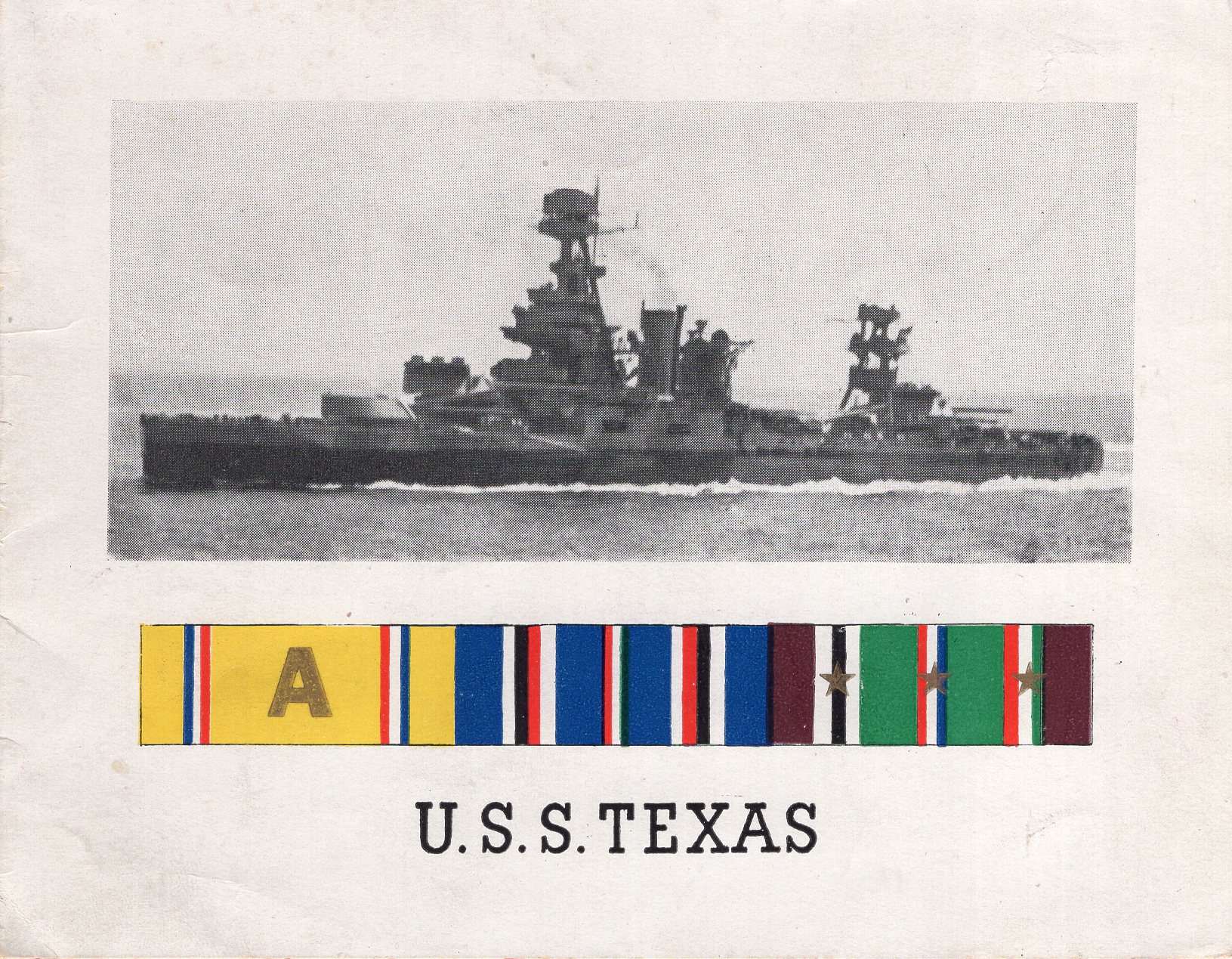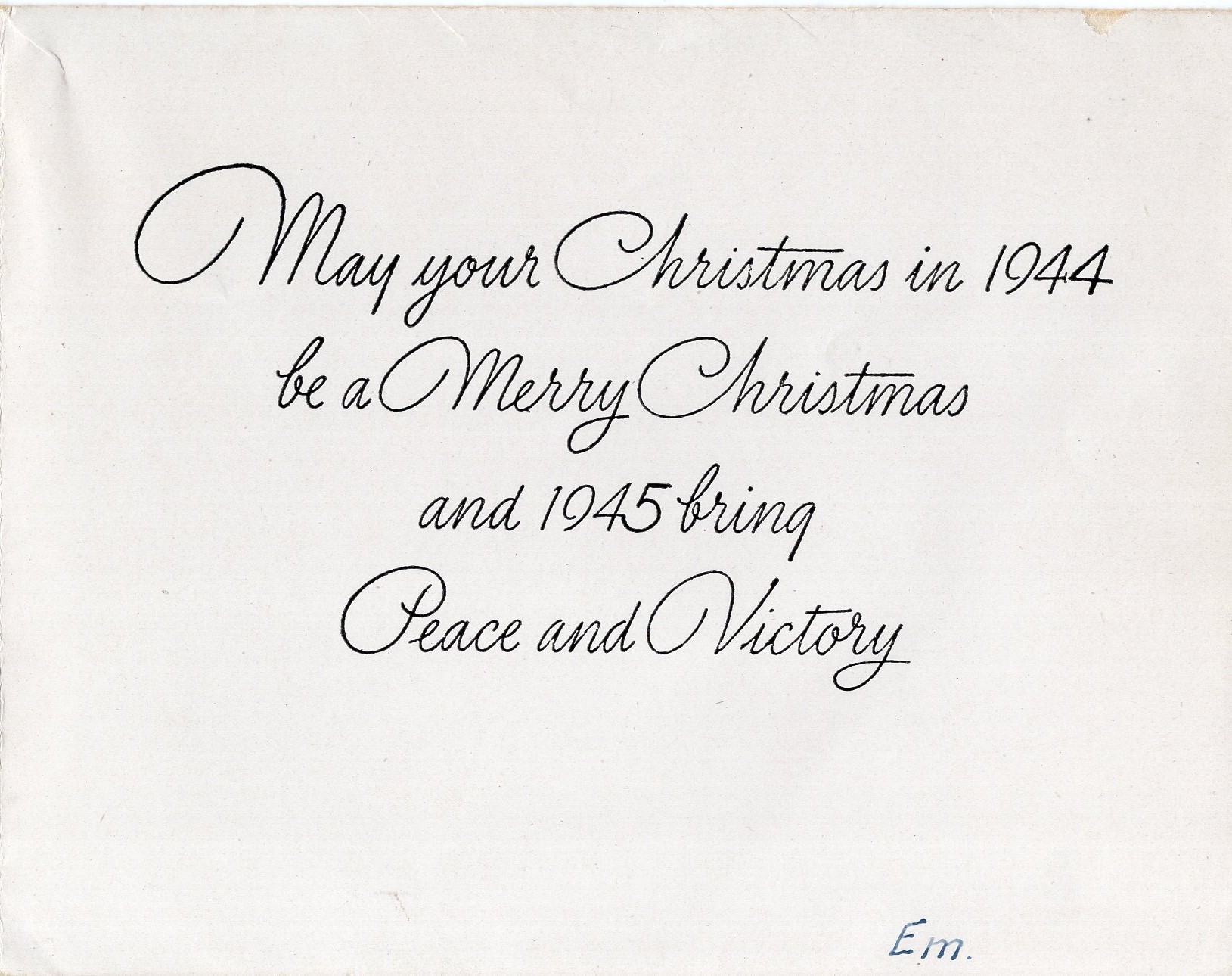Artifact Highlight: Christmas Correspondence
Posted by James Burke on December 18, 2024
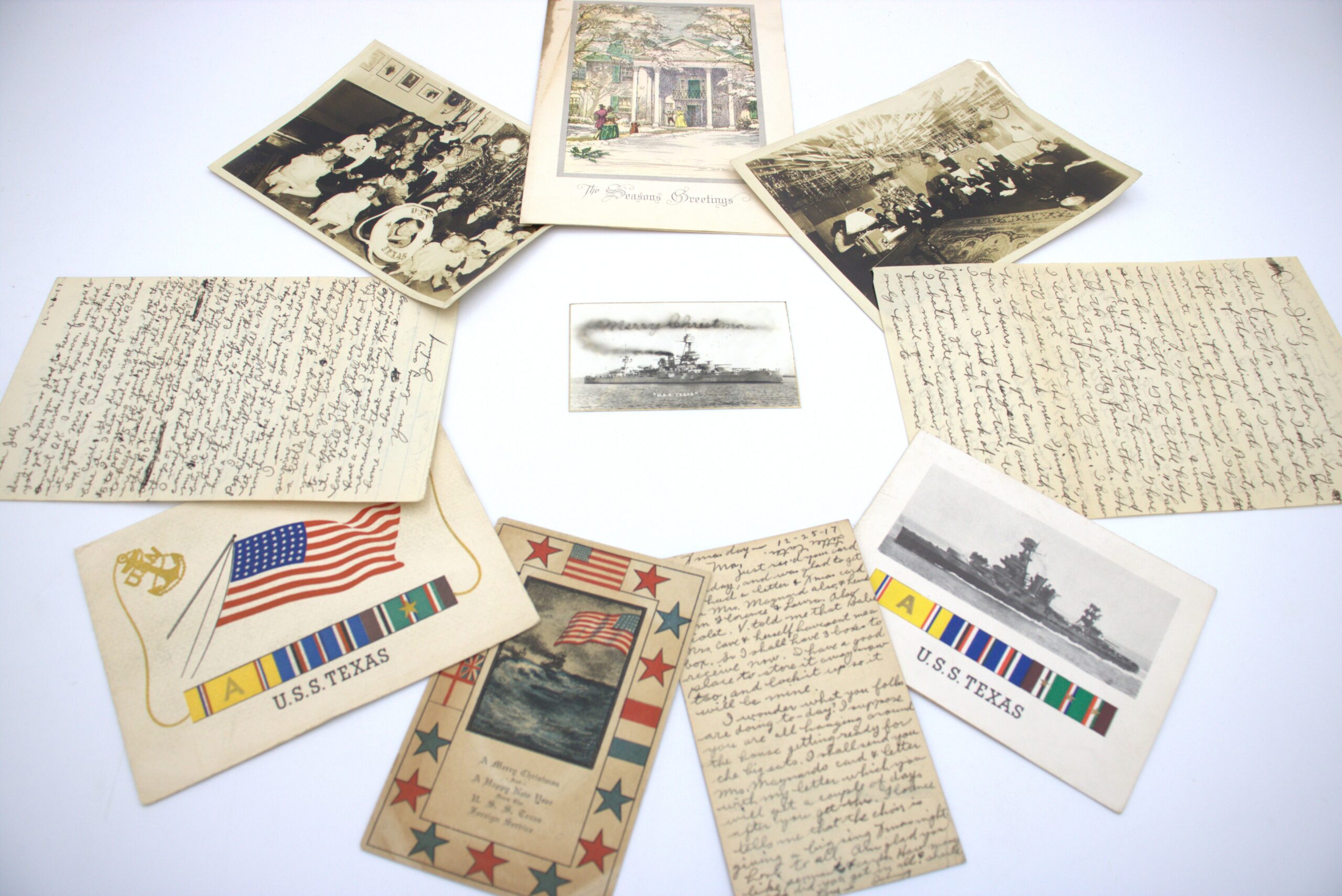
Across Battleship Texas’s active history from 1914 to 1948, thousands of men populated her decks while their families stayed safely home through thirty-four holiday seasons. As many families sat around the tree for presents or gathered for Christmas dinner, sailors and Marines sent thousands of letters, cards, and presents home. Post offices on U.S. warships were introduced in 1908, and prior to World War I, the United States Postal Service (USPS) handled the delivery of mail. However, during the war, U.S. military officials worried USPS access could compromise troop locations. In May 1918, the US established the Military Postal Express Service (MPES) to guard against sending potentially classified information to the home front. The MPES was in service until early 1924, after which USPS took back operation of delivering mail. During World War II, service men and women wrote letters that were photographed and sent back to the States via microfilm. All Christmas correspondence is spread across five different collections, and include written letters, notes on postcards, and more ornate Christmas cards.

Sailors on Texas still missed home despite any celebration onboard. They wrote home and sent along cards and other holiday-themed material. John Lamson represents the largest collection of crew member letters in the museum. He served throughout World War I and into 1919. He received packages and wrote home at least once a week, especially during the holiday season. While most of his letters from home did not survive to make it into our collection, there is a clear back-and-forth in celebrating the holiday season. On Christmas of 1917, Texas sat near New York Harbor in dry dock undergoing repairs after she ran aground on Block Island. He clearly expressed regret for missing the holiday and fantasized about what his family was doing to celebrate. After nearly a year in the North Sea, and Lamson was back stateside. On Christmas in 1918, Texas ported in New York after the conclusion of World War I. While Lamson was lucky to be in the United States both years, he was still bound to the ship and unable to celebrate with his family. He spoke of them celebrating Christmas, what little he could send as a gift, and often a desire to return home.
I wonder what you folks are doing to-day? I suppose you are all hanging around the house getting ready for the big eats……Florence tells me that the choir is giving a big sing Xmas night. Love to all……Love – JohnnyDecember 25, 1917
I wish you all a Merry Xmas and a most Happy New Year…remember that next Xmas I may be home so cheer up.December 26, 1917
Wait until I get home before you open the boxes I want to dish the junk out and surprise you all.December 28, 1918
When crew members did not feel up to writing a long letter they could just as easily send home a themed postcard. Many of Lamson’s letters were written on the back of postcards, though not connected to the holiday season. Many more sailors took the easier route and sent the photos and postcards with little to no writing at all. Sending postcards or photos was common for the crew of Battleship Texas year-round. Some images could be edited works from more popular photographs. One example is a photo sent home by Orville Johnson of Battleship Texas with “Merry Christmas” spelled out in the smoke. Many more were simply standard photos of life on the ship during the holidays. Several purchased photos in collection detail officers’ Christmas meals, sailor and marine compartment decoration contests, and an event where orphans were invited onboard to celebrate with the crew.
The most common holiday correspondence in collection sent home was cards. The tradition of sending Christmas cards in the United States came out of Boston in 1875. Soon after the commission of Texas, the bifold Christmas card became popular throughout the country. Battleship Texas had a number of Christmas card designs over the years. Some cards, like the photos, were holiday-themed illustrations on postcards. One example from the late 1920s is a U.S. Foreign Service holiday postcard. Higher ranking personnel occasionally had their own cards featuring the officers’ names. The one in collection is from 1939 when Texas was a part of the Atlantic Squadron under Rear Admiral Hayne Ellis. During World War II, mail workers scanned most correspondence onto microfilm to compact transportation. However, cards remained a tradition throughout World War II, despite other forms of shipment. Two World War II cards in collection feature the same language that desired an end of the war. “May your Christmas in 1943 be a Merry Christmas and 1944 bring Peace and Victory,” and another wishing the same in 1944 of 1945. Thankfully that one proved true.
Most correspondence from the Christmas season, with few exceptions, was written or printed on paper. Letters and cards alike require the same method of handling. Paper should always be handled by clean, dry hands. Gloves of any kind should not be worn since the material, whether nitrile or cotton, can damage the paper. Lack of tactility is far more harmful than the oils present on the human hand. However, photographs should be handled wearing nitrile gloves, as fingerprints can deposit on the front face if handled with bare hands. The storage of photos is the same for all correspondence. Staff placed all letters, photographs, cards, and postcards in polyester sleeves, then put them into acid-free folders, and further sorted them into the various archive boxes that correspond to the individual artifact’s collection. Additionally, storage should be in a dry environment.
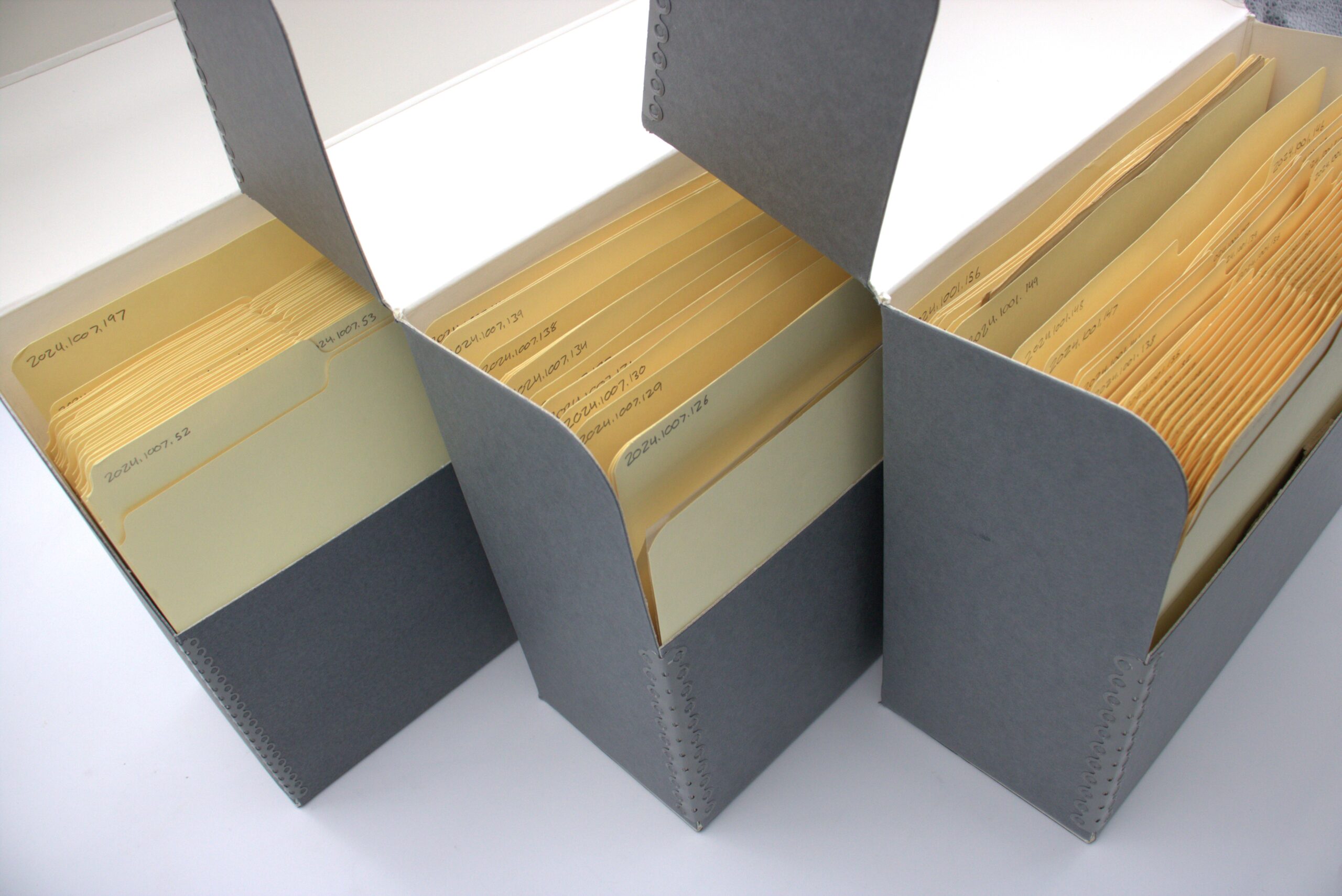
Generous donors give new and interesting artifacts to Battleship Texas Foundation regularly. Sailors celebrated holidays as much as civilians, and their letters and cards help us understand how. While limited, they did their best to make as festive an environment as possible and share what holiday joy they had with those they loved back home. The Battleship Texas Foundation is actively collecting historic items, photographs, and documents related to Battleship Texas (BB-35), Battleship New York (BB-34), or the other commissioned ships named USS Texas (SSN-775, CGN-39, and the first USS Texas commissioned in 1895). If you have an item that makes you say, “It belongs in a museum!” please email us at [email protected] with photos and any relevant information. Our staff is working diligently to collect, accession, and archive historical items of the Last Dreadnought.
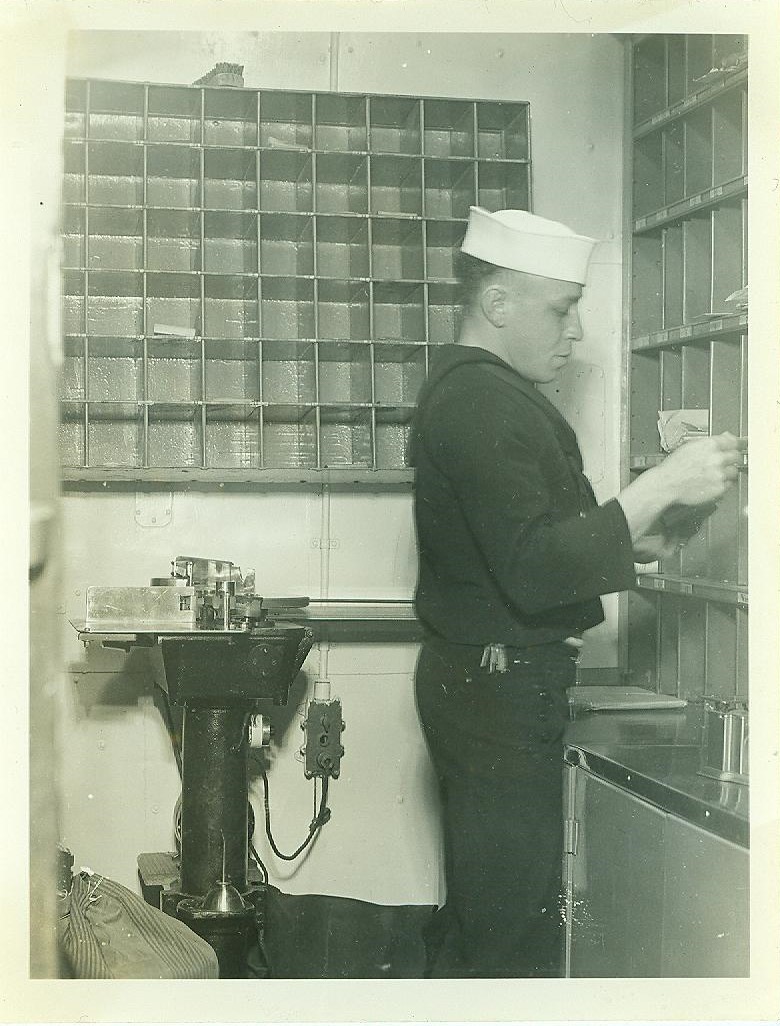
And from the crew of Battleship Texas Foundation
May your Christmas in 2024 be a Merry Christmas and 2025 bring Peace and Victory

James Burke is a History PhD student at the University of Houston and has worked as curatorial staff with Battleship Texas since 2020.


